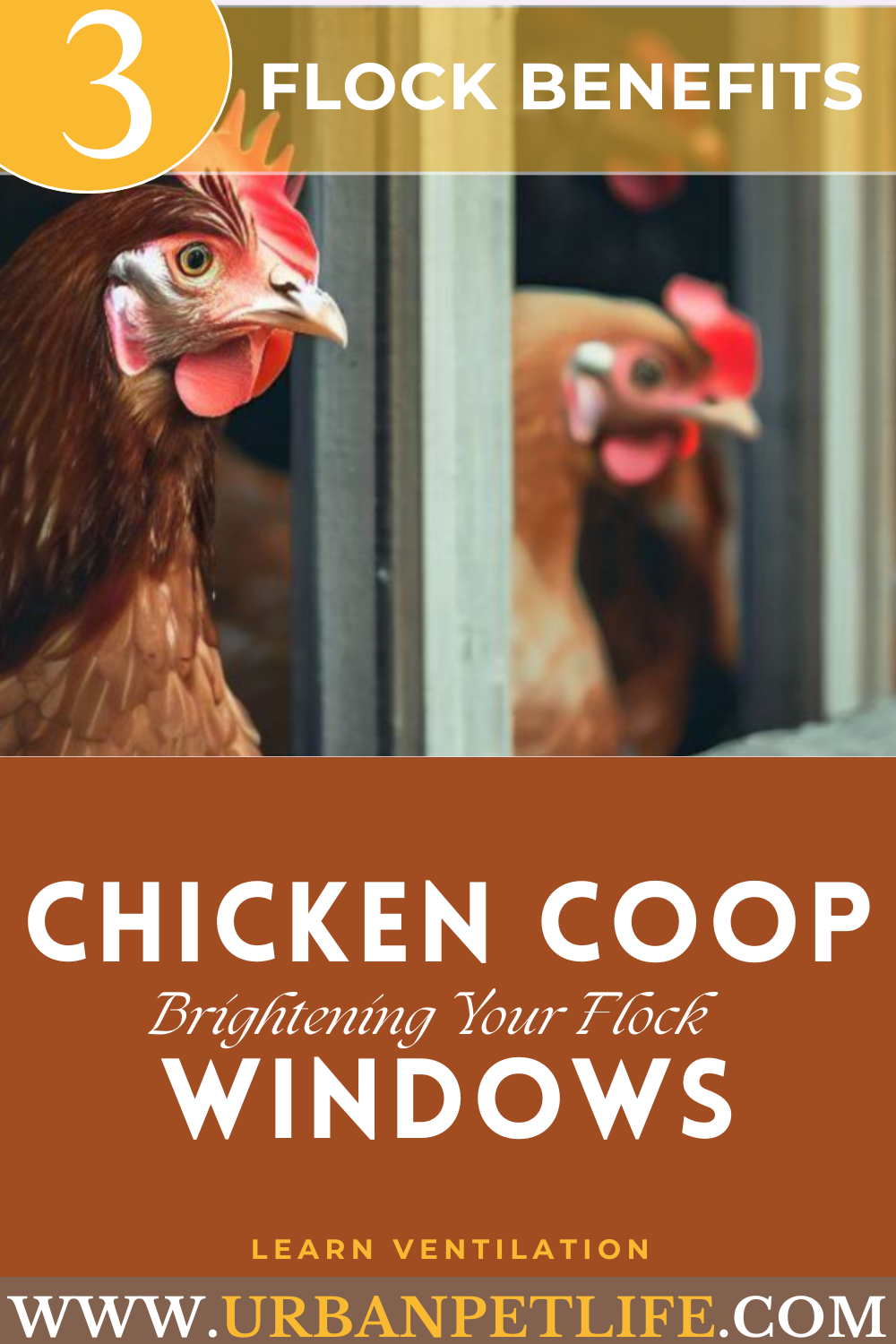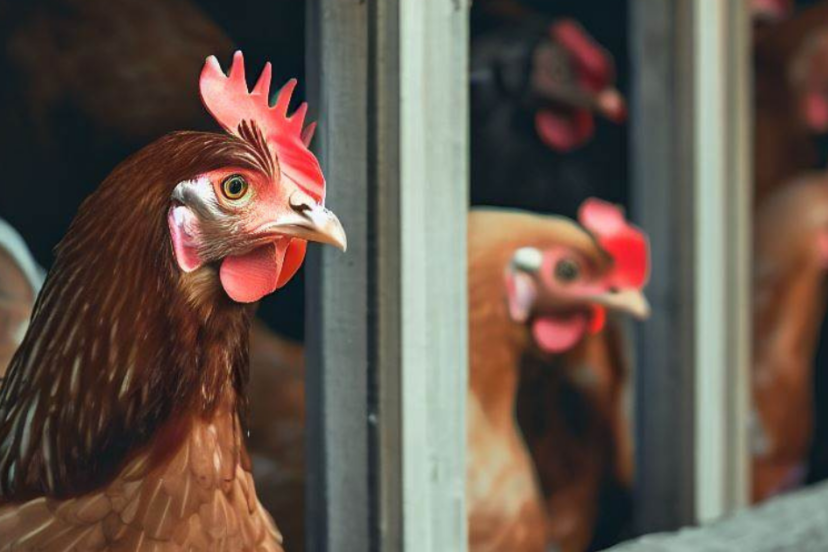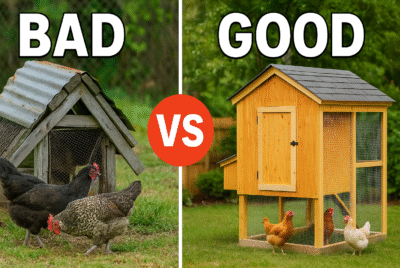Chicken Coop Windows: Brightening Your Flock’s World
I’ve come to understand the significance of every aspect of a chicken coop. Today, I want to shed light on an often underestimated feature: chicken coop windows. These small openings can make a big difference in the health, well-being, and overall experience of your feathered friends. Join me as we explore the benefits, considerations, and design strategies for creating the perfect window setup in your
chicken coop.
The Benefits of Chicken Coop Windows
When it comes to creating a comfortable and thriving environment for your chickens, natural light and proper ventilation play vital roles. Let’s take a closer look at the key benefits of incorporating windows into your chicken coop design.
1. Natural Light for Better Chicken Health
Just like humans, chickens require exposure to sunlight to maintain their well-being. Natural light helps regulate their circadian rhythms, enhances
egg production, and boosts vitamin D synthesis. By allowing sunlight to enter the coop through well-placed windows, you provide your flock with a healthier living environment.
2. Improved Ventilation and Airflow
Proper airflow is crucial for maintaining optimal air quality inside the chicken coop. Windows serve as additional ventilation points, a natural
coop fan, allowing fresh air to circulate and remove excess moisture, ammonia, and other gases. This helps prevent respiratory issues and keeps the coop environment comfortable and odor-free.
3. Visual Access for Monitoring and Enjoyment
Chicken coop windows offer you a window into the world of your flock. By providing visual access, you can easily monitor their activities, check on their well-being, and ensure they are safe and secure. Moreover, watching chickens pecking, scratching, and interacting can be a delightful experience for chicken enthusiasts of all ages.
4 Factors to Consider When Choosing Chicken Coop Windows
Now that we understand the importance of chicken coop windows, let’s delve into the key factors to consider when selecting the right windows for your coop.
1. Window Size and Placement
The size and placement of windows depend on the size of your coop and the number of chickens you have. As a general rule, windows should comprise around 10% of the total coop wall area to ensure sufficient light and ventilation. Consider the dimensions of your coop and strategically position the windows to maximize natural light exposure and airflow.
2. Material and Durability
Select windows made of durable materials that can withstand the elements and potential pecking from curious chickens. Options include acrylic, polycarbonate, or glass windows. Each material has its pros and cons, so weigh factors like cost, insulation properties, and ease of cleaning before making your choice.
3. Security and Predator Protection
While windows offer benefits, they also pose potential risks if not adequately secured. Ensure your chosen windows have sturdy frames and secure locks to prevent unauthorized entry by predators. Additionally, consider installing hardware cloth or wire mesh on the exterior of the windows to further fortify them against potential predators.
4. Ease of Cleaning and Maintenance
Keeping chicken coop windows clean is essential for maintaining optimal transparency and functionality. Choose windows that are easy to open, close, and clean. Removable screens or sliding panels can simplify the cleaning process and allow for hassle-free maintenance.
3 Key Things: Designing an Ideal Window Setup for Your Chicken Coop
Now that you’re familiar with the factors to consider, let’s discuss how to design an ideal window setup for your chicken coop.
1. Determining the Optimal Number of Windows
The number of windows you need depends on the size of your coop, the number of chickens, and the local climate conditions. As a general guideline, aim for at least two to three windows to ensure adequate light and ventilation. Assess the layout of your coop and strategically place the windows to promote cross-ventilation and even distribution of natural light.
2. Proper Window Positioning for Light and Airflow
Consider the orientation of your coop and the path of the sun throughout the day. Place windows on the south or east sides of the coop to maximize sunlight exposure. This ensures that the coop receives ample morning and early afternoon sunlight, benefiting both the chickens and any plants inside the coop.
3. Window Coverings for Added Flexibility and Protection
While natural light is beneficial, there may be times when you need to control the amount of light entering the coop, such as during extreme heat or cold. Install window coverings like curtains, shutters, or removable panels to provide flexibility in regulating light levels and insulating the coop when necessary. These coverings also offer additional protection during severe weather conditions.
3 Key aspects: Maintaining Chicken Coop Windows
Regular maintenance and care are essential to keep your chicken coop windows functioning optimally. Here are some key aspects to consider:
1. Regular Cleaning and Maintenance Routine
Make it a habit to clean your coop windows regularly to remove dirt, dust, and chicken droppings that can accumulate over time. Use mild soap, water, and a soft cloth or sponge to gently clean the window surfaces. Inspect the frames, hinges, and locks for any signs of damage or wear, and address them promptly to ensure proper functionality.
2. Seasonal Adjustments and Considerations
Throughout the year, you may need to make seasonal adjustments to your chicken coop windows. During colder months, you can cover windows partially or fully with insulating materials like bubble wrap or clear plastic to retain heat inside the coop. In warmer months, ensure windows are open or equipped with screens to promote adequate airflow and prevent overheating.
3. Addressing Potential Issues or Damages
Regularly inspect your chicken coop windows for any signs of damage, such as cracks, gaps, or loose seals. Address these issues promptly to prevent water leaks, drafts, or pest infiltration. Replace or repair damaged windows to maintain the functionality and effectiveness of your coop’s ventilation and lighting system.
3 Key Types for Chicken Coop Windows:
Ideal for setups with one to five chickens, where space and ventilation are important but not overwhelming. A smaller window like the 12″ x 18″ Playhouse Window offers enough ventilation without taking up too much wall space.
Medium Chicken Coops:
For coops housing five to ten chickens, a slightly larger window like the 14″ x 21″ Horizontal Window provides the right balance of light and airflow.
Large Chicken Coops:
In large setups with over ten chickens, you’ll need substantial ventilation and light. A large window like the 32″ x 16″ Horizontal Sliding Window is perfect for ensuring your chickens stay comfortable and healthy.
Buyer guides: Chicken Coop Windows
1. Small Chicken Coop Coop (up to 5 Chicken Coop Windows)
Shed Windows and More 12″ x 18″ Playhouse Window
– Size: 12″ x 18″
Pros:
– Durable Construction: Made with high-quality materials that are weather-resistant.
– Safety Glass: Provides extra protection for your chickens.
– Integrated Screen: Allows for ventilation while keeping bugs and predators out.
– Easy Installation: Quick and straightforward to install.
Cons:
– Limited Light: Smaller window size may not provide as much natural light for larger coops.
– Ventilation Area: The smaller surface area might limit airflow in very hot climates.
2. Medium Chicken Coop(1 to 5 Chicken Coop Windows)
Shed Windows and More 14″ x 21″ Horizontal Window
– Size: 14″ x 21″
Pros:
– Larger Light Access: Provides more natural light compared to smaller windows.
– Tempered Glass: Offers excellent safety and durability.
– Weather-Resistant: Built to withstand harsh weather conditions.
– Integrated Screen: Maintains ventilation while keeping pests out.
Cons:
– Heavier: Slightly more complex to install due to its size.
– Ventilation Limitation: While larger than small coop windows, it might still not be enough for very large coops or in very hot climates.
3. Large Chicken Coop (plus 10 Chicken Coop Windows)
VBSI 32″ x 16″ Horizontal Sliding Window
– Size: 32″ x 16″
Pros:
– Ample Ventilation: Large sliding window offers excellent airflow, perfect for large coops.
– Smooth Sliding Mechanism: Easy to open and close, providing flexibility in ventilation.
– Large Light Access: Maximizes the amount of natural light entering the coop.
– Weather-Resistant Construction: Designed to withstand the elements, ensuring durability.
Cons:
– Complex Installation: Larger size may require more effort and expertise to install.
– Higher Cost: Larger windows tend to be more expensive.
These recommendations should help you find the right window size and features for your chicken coop based on your flock size and environmental needs.
Conclusion
Chicken coop windows are more than just openings in the walls; they are essential elements that contribute to the overall health and well-being of your flock. By incorporating well-placed windows, you can provide your chickens with natural light, fresh air, and a comfortable living environment.
Housing Backyard Chickens is essential to the protect your flock from predators and weather elements. Consider the factors discussed, design your window setup strategically, and ensure regular maintenance to maximize the benefits these windows bring to your chicken coop.
FAQs
1. What size should chicken coop windows be?
Chicken coop windows should ideally comprise around 10% of the total wall area to ensure sufficient light and ventilation.
2. Can I use regular household windows for a chicken coop?
While it’s possible to repurpose household windows, it’s important to consider durability, security, and predator protection factors specific to chicken coops.
3. How many windows do I need in my chicken coop?
The number of windows depends on the coop’s size, number of chickens, and local climate conditions. Aim for at least two to three windows for adequate light and ventilation.
4. Should I cover the windows during extreme weather conditions?
Yes, it’s advisable to have window coverings like curtains, shutters, or removable panels to regulate light levels and provide protection during severe weather conditions.
5. Are there any alternatives to traditional windows for chicken coops?
Yes, alternatives include using wire mesh or hardware cloth as window coverings to provide ventilation while ensuring predator protection.
Remember, providing your chickens with a well-designed window setup in their coop can greatly enhance their living conditions and contribute to their overall health and happiness. Enjoy the benefits of natural light, fresh air, and visual access to your feathered friends!
*We may earn a commission from purchases made through our links, at no cost to you. This does not affect our product recommendations. Please see our disclosure to learn more.





